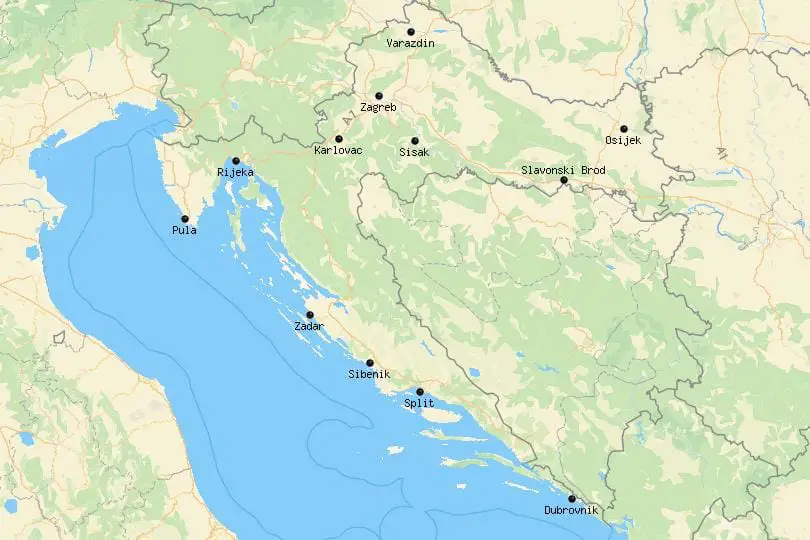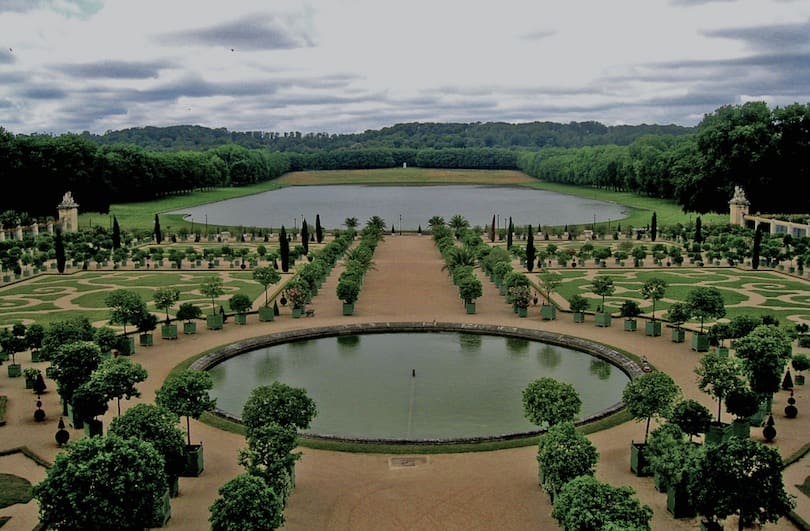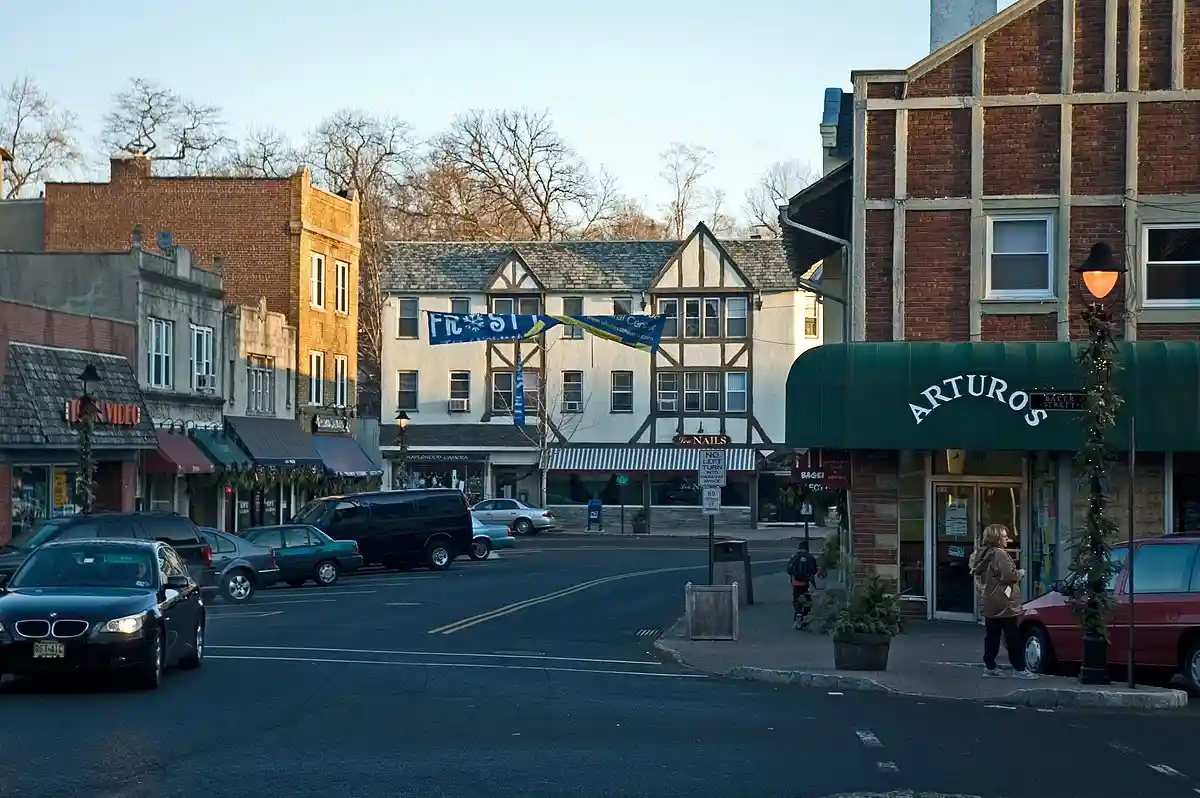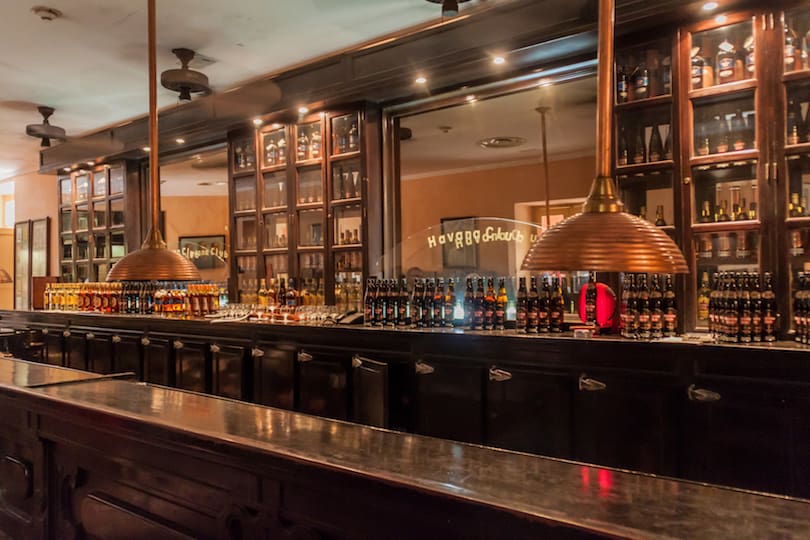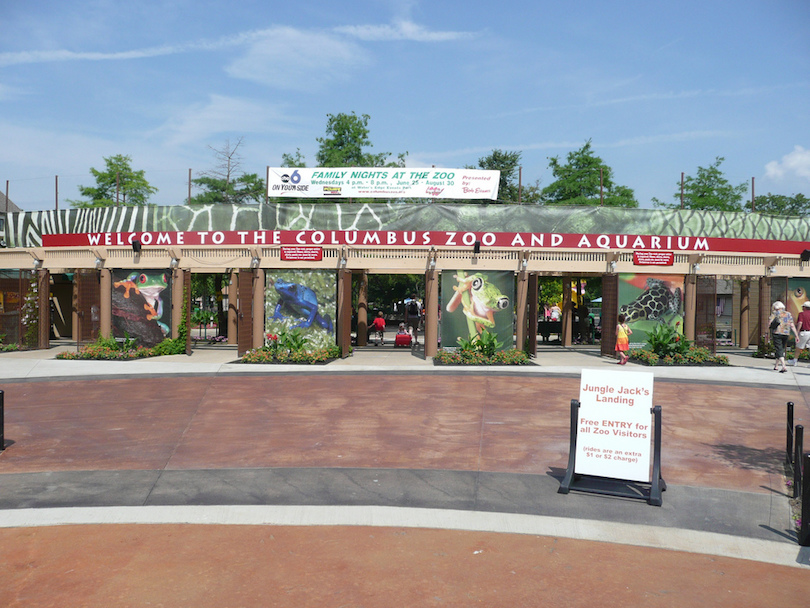Discover the 12 best cities to visit in Croatia along the enchanting Adriatic Coast. From historic wonders to breathtaking landscapes, explore the gems of Croatia, providing you with an unforgettable travel experience.
Introduction
Croatia, nestled in the heart of Europe, is a country brimming with ancient history, stunning landscapes, and a unique blend of cultures. Its Adriatic Coast offers a mesmerizing array of cities, each with its own charm and allure. In this comprehensive guide, we’ll take you on a journey through the “12 Best Cities to Visit in Croatia,” where we’ll unveil the hidden gems that make this Adriatic Coast so special. Whether you’re a history enthusiast, an adventure seeker, or a nature lover, Croatia has something exceptional to offer. Let’s embark on this unforgettable adventure together!
1. Dubrovnik: The Pearl of the Adriatic Coast
Dubrovnik, often referred to as the “Pearl of the Adriatic,” is a city steeped in history and breathtaking beauty. Enclosed within medieval walls, this UNESCO World Heritage Site is renowned for its well-preserved historical buildings and narrow stone-paved streets. Walk along the ancient city walls, which offer panoramic views of the azure Adriatic Sea. Explore the iconic Pile Gate, Onofrio’s Fountain, and the majestic Rector’s Palace. Don’t miss out on visiting Lokrum Island, a lush paradise just a short boat ride away.
2. Split: Where History and Modernity Meet
Split is a city where ancient history seamlessly blends with a vibrant modern atmosphere. At its heart lies Diocletian’s Palace, an awe-inspiring 4th-century Roman marvel that now forms the city’s bustling center. Lose yourself in the maze of streets within the palace complex, filled with lively cafes, shops, and cultural attractions. Head to Marjan Hill for a stunning view of the city and the surrounding islands, or soak in the sun on the popular Bačvice Beach.
3. Zagreb: The Dynamic Capital
As the capital of Croatia, Zagreb boasts a unique mix of historical significance and contemporary flair. Explore the Upper Town, with its medieval churches and charming cobblestone streets. Don’t miss St. Mark’s Church, adorned with its colorful tiled roof, a symbol of the city. Visit the fascinating Museum of Broken Relationships, an emotional tribute to human connections. Experience Zagreb’s vibrant arts scene, from galleries to street performances, and indulge in its delightful culinary offerings.
4. Zadar: Where Nature Meets Art
Zadar is a coastal gem renowned for its stunning sunsets and innovative art installations. Witness the magical “Sea Organ,” an architectural masterpiece that transforms the sea’s waves into harmonious melodies. Marvel at the “Greeting to the Sun,” a solar-powered art installation illuminating the night sky. Explore the ancient Roman Forum and the 9th-century Church of St. Donatus, showcasing the city’s rich historical heritage.
5. Pula: A Journey to the Past
Pula, situated on the Istrian Peninsula, is a city steeped in Roman history. Its most famous landmark is the remarkably well-preserved Pula Arena, a Roman amphitheater that hosts concerts and events to this day. Wander through the Old Town’s charming streets and discover hidden cafes and local markets. Take a boat trip to the Brijuni Islands National Park for a glimpse of stunning natural beauty and ancient archaeological sites.
6. Rovinj: An Artist’s Paradise
Rovinj is a picturesque coastal town characterized by its colorful buildings and artistic ambiance. Stroll through the charming Old Town, where narrow streets lead to the magnificent St. Euphemia’s Basilica, offering breathtaking views of the town and sea. Discover local art galleries, and don’t miss the chance to savor fresh seafood in one of Rovinj’s waterfront restaurants. Embark on a boat trip to the nearby Lim Fjord, a natural wonder surrounded by lush greenery.
7. Hvar: Lavender-Scented Luxury
Hvar, an island paradise in the Adriatic Sea, is known for its lavender fields, crystal-clear waters, and vibrant nightlife. Explore the elegant Hvar Town, where you’ll find beautiful Renaissance architecture and the impressive Spanjola Fortress. Bask in the sun on the stunning beaches or take a boat tour to the nearby Pakleni Islands. When the sun sets, experience Hvar’s lively nightlife with beachside bars and clubs.
8. Šibenik: A City of Heritage and Waterfalls
Šibenik is a city surrounded by natural wonders, including the Krka National Park with its mesmerizing waterfalls. Explore the historic St. James’s Cathedral, a UNESCO World Heritage Site, characterized by its unique blend of Gothic and Renaissance architecture. Wander through the cobbled streets of the Old Town, where you’ll find quaint shops and traditional Dalmatian cuisine.
9. Trogir: A Living Open-Air Museum
Trogir, a charming town on the Adriatic Coast, is like stepping back in time. Its well-preserved medieval architecture earned it a place on the UNESCO World Heritage List. Visit the impressive Trogir Cathedral, the St. Lawrence Fortress, and the Cipiko Palace. Stroll along the scenic promenade, enjoy the serene ambiance of Kamerlengo Castle, and relax at one of the local cafes by the waterfront.
10. Poreč: A Journey Through Time
Poreč, situated on the Istrian Peninsula, is renowned for its well-preserved Roman heritage and stunning Euphrasian Basilica. Explore the city’s ancient streets, visit the Temple of Neptune, and discover the House of Two Saints. Poreč offers a beautiful waterfront and a lively atmosphere, making it a perfect destination for culture enthusiasts and sun-seekers alike.
11. Makarska: Nature’s Paradise
Makarska, nestled between the Biokovo Mountains and the Adriatic Sea, boasts stunning natural beauty. Relax on its beautiful pebble beaches, swim in the crystal-clear waters, and explore the nearby islands by boat. For the adventurous, hiking in the Biokovo Nature Park offers breathtaking panoramic views. The charming Old Town with its cozy cafes and restaurants adds to the overall allure of Makarska.
12. Korčula: Island of History and Legends
Korčula, the birthplace of the famous explorer Marco Polo, is an island steeped in history and legends. Wander through the narrow streets of Korčula Town, where you’ll find medieval architecture and traditional stonework. Discover the Marco Polo Museum, showcasing the life and travels of the renowned explorer. Enjoy the island’s vineyards, olive groves, and serene beaches, providing an idyllic escape from the hustle and bustle of everyday life.
FAQs
1. When is the best time to visit Croatia?
The best time to visit Croatia is during the shoulder seasons of spring (April to June) and autumn (September to October). During these months, the weather is pleasant, and the crowds are relatively smaller compared to the peak summer season. You’ll get to enjoy milder temperatures, blooming landscapes, and have a more immersive experience in the cities and attractions.
2. What are some must-try Croatian dishes?
Croatia’s culinary scene is a delight for food lovers. Don’t miss trying some traditional dishes such as “Peka,” a succulent slow-cooked meat and vegetable dish prepared under a metal bell-like dome. “Cevapi,” small grilled sausages served with onions and flatbread, is a popular street food choice. For seafood enthusiasts, “Black Risotto,” made with cuttlefish ink and rice, offers a unique and flavorful experience.
3. Are the beaches in Croatia worth visiting?
Absolutely! Croatia boasts an incredible coastline with numerous stunning beaches. From pebble shores to sandy coves, each beach has its own appeal. The crystal-clear waters of Zlatni Rat Beach in Bol, Brac, and the sandy beaches of Lopar, Rab, are just a few examples of the many beautiful beaches that await you in Croatia.
4. Is it safe to travel in Croatia?
Croatia is generally a safe country for travelers. The crime rate is relatively low, and the locals are friendly and welcoming. However, as with any travel destination, it’s always best to take common-sense precautions. Be mindful of your belongings in crowded areas and avoid displaying valuable items. Overall, Croatia is considered a safe and secure place for tourists.
5. What are some outdoor activities to enjoy in Croatia?
Croatia’s diverse landscapes offer a plethora of outdoor activities. Hiking enthusiasts can explore the Paklenica National Park or trek through the mesmerizing Plitvice Lakes National Park. Adventurers can indulge in water sports like kayaking and paddleboarding along the coastline or go rock climbing in Paklenica. Scuba diving in the crystal-clear Adriatic Sea is also a popular choice for underwater exploration.
6. How is the transportation system in Croatia?
Croatia has a well-developed transportation network, making it convenient for travelers to explore the country. The major cities are connected by buses and trains, providing affordable and efficient options for inter-city travel. Ferries and catamarans operate between the islands, offering scenic and enjoyable island-hopping experiences. Renting a car is a great way to explore the more remote areas and enjoy the picturesque drives along the coast.
Conclusion
Embarking on a journey to the 12 best cities in Croatia is like stepping into a captivating tale of history, culture, and natural beauty. From the ancient walls of Dubrovnik to the charming streets of Rovinj, each city on the Adriatic Coast offers a unique and unforgettable experience. Whether you’re exploring historical landmarks, indulging in mouthwatering cuisine, or basking in the sun on pristine beaches, Croatia promises to leave an indelible mark on your heart.
So, pack your bags and set off on an adventure of a lifetime. Discover the gems of the Adriatic Coast and create cherished memories that will last forever. Croatia awaits, ready to enchant and embrace you in its warm Mediterranean embrace.

